
The earliest known capital city of Indraprastha was founded by the Pandavas in c1450BC. Maya, the Danava architect built a splendid palace and court for them. Recent finds support the view that it was located in the Purana Qila area. There are various views as to how Delhi, the capital of Indian Subcontinent, derived its name. It may have come from Raja Dillu"s Dilli, c100BC, which was sited just east of Lalkot, or from Dhilba founded by the Tomar Rajputs in c736AD. And some say it came from the medieval town of Dhillika located near present date Mehrauli. Other cities recorded are Surajpal"s Surajkund c1024 AD, Qila Lal Kot c1024 AD which was built by Anangpal and Qila Rai Pithora c1170 AD of the brave and daring king Prithviraj Chauhan.
The earliest known capital city of Indraprastha was founded by the Pandavas in  c1450BC. Maya, the Danava architect built a splendid palace and court for them. Recent finds support the view that it was located in the Purana Qila area. There are various views as to how Delhi, the capital of Indian Subcontinent, derived its name. It may have come from Raja Dillu"s Dilli, c100BC, which was sited just east of Lalkot, or from Dhilba founded by the Tomar Rajputs in c736AD. And some say it came from the medieval town of Dhillika located near present date Mehrauli. Other cities recorded are Surajpal"s Surajkund c1024 AD, Qila Lal Kot c1024 AD which was built by Anangpal and Qila Rai Pithora c1170 AD of the brave and daring king Prithviraj Chauhan.
c1450BC. Maya, the Danava architect built a splendid palace and court for them. Recent finds support the view that it was located in the Purana Qila area. There are various views as to how Delhi, the capital of Indian Subcontinent, derived its name. It may have come from Raja Dillu"s Dilli, c100BC, which was sited just east of Lalkot, or from Dhilba founded by the Tomar Rajputs in c736AD. And some say it came from the medieval town of Dhillika located near present date Mehrauli. Other cities recorded are Surajpal"s Surajkund c1024 AD, Qila Lal Kot c1024 AD which was built by Anangpal and Qila Rai Pithora c1170 AD of the brave and daring king Prithviraj Chauhan.
In the same area Qutb-ud-din-Aibak built his citadel and the Qutb Minar in the year 1199. He completed 3 storeys and his son-in-law Iltutmish, added the fourth. It was damaged by lightning in the years 1326 & 1366. Firoz Shah Tughlaq repaired the damage and added the fifth storey. It stands 72 metres high. Ala-ud-Din-Khilji built a new capital for himself at Siri, c1302 AD. His palace of a thousand pillars saw many triumphs and tragedies, but has since completely gone to ruins. It was Ala-ud-Din-Khilji who built the magnificent tank called Hauz Khas. At that time it had enough water to meet the needs of the city. Ghiyas-ud-Din-Tughluq, in c1320 moved south and built the fort city of Tughlakabad on the rocky southern ridge. It has massive bastions and walls. Though strategically located, it was deserted within 5 years perhaps because of a shortage of water. Muhammad Shah Tughluq first built Adilabad just south of Tughlakabad but soon abandoned it. He moved north and gave his city the name of Jahanpanah (asylum of the world) in 1334 AD.
Using the fortifications of the older cities, it had 13 gates. His son, Firuz Shah  Tughluq, did not want to be left behind, so he created his own city Firuzabad (Kotla Firoz Shah), in the year 1351. He bought and erected a 8m tall 27 ton glittering golden monolith from Topra, near Ambala. Encased in reeds and raw skins it was transported on a carriage of 42 wheels, with 200 men pulling each wheel with ropes. This was emperor Ashoka"s pillar with his edicts inscribed on it. It still stands in Kotla Firoz Shah. Babar"s son Humayun, in 1530 AD, built a fort on one of the oldest settlements and called it Dinpanah. The afghan king, Sher Shah Suri, wrested control from Humayun and built Dilli in 1542, encompassing a very large area. The Mughal emperor Shah Jahan built his fort, the Lal Qila and the huge well laid out city, Shahjahanabad, in 1648 AD. It took 10 years to build. The city fort had 14 gates many of which still exists. This city survives as the old Delhi of today. Finally, the British built New Delhi, south of Shahjahanabad and shifted their capital from Calcutta in 1931. In the six decades since the creation of New Delhi as the Capital of British India, the city has undergone a sea change. Made initially to cater to a population of 70,000, the total urban population of Delhi now exceeds 8 million. The city has exploded in all directions beyond the confines of Lutyen"s wide, tree-lined avenues, with an exuberance that is characteristically Indian. Several factors have contributed to this breathless pace of growth. For North India, especially, Independence also meant Partition. In 1947, many Muslim families of Delhi migrated to Pakistan while many Hindus and Shikhs from west Punjab sought refuge in the city
Tughluq, did not want to be left behind, so he created his own city Firuzabad (Kotla Firoz Shah), in the year 1351. He bought and erected a 8m tall 27 ton glittering golden monolith from Topra, near Ambala. Encased in reeds and raw skins it was transported on a carriage of 42 wheels, with 200 men pulling each wheel with ropes. This was emperor Ashoka"s pillar with his edicts inscribed on it. It still stands in Kotla Firoz Shah. Babar"s son Humayun, in 1530 AD, built a fort on one of the oldest settlements and called it Dinpanah. The afghan king, Sher Shah Suri, wrested control from Humayun and built Dilli in 1542, encompassing a very large area. The Mughal emperor Shah Jahan built his fort, the Lal Qila and the huge well laid out city, Shahjahanabad, in 1648 AD. It took 10 years to build. The city fort had 14 gates many of which still exists. This city survives as the old Delhi of today. Finally, the British built New Delhi, south of Shahjahanabad and shifted their capital from Calcutta in 1931. In the six decades since the creation of New Delhi as the Capital of British India, the city has undergone a sea change. Made initially to cater to a population of 70,000, the total urban population of Delhi now exceeds 8 million. The city has exploded in all directions beyond the confines of Lutyen"s wide, tree-lined avenues, with an exuberance that is characteristically Indian. Several factors have contributed to this breathless pace of growth. For North India, especially, Independence also meant Partition. In 1947, many Muslim families of Delhi migrated to Pakistan while many Hindus and Shikhs from west Punjab sought refuge in the city
They were given land west of the Ridge and south of New Delhi. Many of these refugees also built their houses across the Yamuna and north of Shahjahanabad. Since then, the influx into the city hasn"t ceased. The manpower required by the Government in the Capital is itself staggering. Industrialists, Entrepreneurs and migrant labour from all over India have turned to Delhi in search of livelihood and success, and made it a commercial capital as well. The cultivated fields which till recently could be seen on the outskirts of the city, have been developed into residential colonies and commercial complexes. High-rise buildings now stand check-by-jowl with Delhi"s 1300 monuments. Villages such as Khirkee, Begumpur, Hauz Khas, Sheikh Sarai and Nizamuddin which grew around medieval Delhi"s shifting capital cities, have now been engulfed by the urban sprawl. Many of them, however, retain their old-world characteristics. The line of distinction between Old and New Delhi has begun to blur - north, south, east and west Delhi are more prevalant terms of demarcation.
The facilities and opportunities available in Delhi have attracted Indians from far-flung corners of the country, making it a melting pot of sorts. On the other hand, the presence of diplomatic and trade mission, the growing number of multi-national companies andforeign investors, and the influx of tourists and visiting professionals have given the city, especially its southern and central parts, a cosmopolitan air. The coexistence of the past and the present at many levels characterizes Delhi, as it does India. The assimilation of a specific cultural influence is expressed differently by people living in different parts of the city, a fact which offers insights into the social strata. South Delhi is undoubtedly the trend-setter, and the fashions and lifestyle introduced here become the aspirations of many. There are however, dramatic differences in localities, standards of living and adherence to traditions. Delhi is one of the most historic capitals in the world and two of its monuments- the Qutb Minar and Humayun"s Tomb - have been declared World Heritage Sites. It is also one of the greenest capitals. For the visitor, it serves as a perfect introduction to the cultural wealth, the complexities and dynamism of India. The capital city today has grown. It has engulfed all the ancient city sites and overflows across the Yamuna and the Northen Ridge. Delhi is still changing.

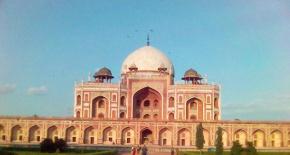
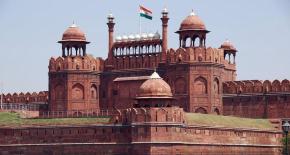
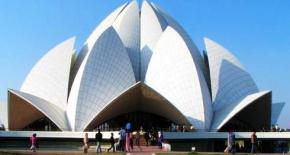
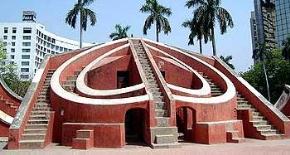
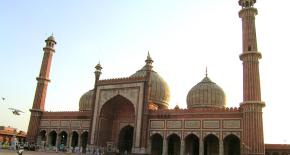
Visit New Delhi, the city of dreams with New Delhi hub. The national capital city is the initiating point for many tourist places in India. New Delhi offers various sites to be visited in and around the city. While on tour to New Delhi you can visit the popular historical sites situated in the city, which attract a large number of tourists every year. We at New Delhi Hub offer you tours for local sightseeing in Delhi; these include some of the famous sites of Delhi as under:
Swaminarayan Akshardham in New Delhi epitomises 10,000 years of Indian culture in all its breathtaking grandeur, beauty, wisdom and bliss. It bri....
Lodi Gardens are a real heaven of tranquility and peace from the hustle and bustle of Delhi. These gardens are very beautiful and home to a wide....
A must-visit if you are planning to travel to New Delhi, the Lakshmi Narayan Temple, popularly known as Birla Mandir, was built in 1938. The temp....
One of the most spectacular Mughal buildings, Humayun"s tomb was added to Unesco"s World Heritage List in 1993. Built by Haji Begum, the widow of....
Representing the last phase of the Mughal style of architecture, Safdarjang"s Tomb stands in the centre of an extensive garden. Built in 1753 by....
Baha"i Temple in Delhi is often compared to the Sydney Opera House. Located 12km southeast of Connaught Place, has emerged as a top attraction fo....
A high-arched memorial in tribute to the soldiers martyred in the Afghan War, it has the names of all these heroic men inscribed on it. India Gat....
Qutab Minar, the 239ft sandstone tower is an Indo-Islamic architectural wonder of ancient India. This magnificent tower of victory stands in the....
The Red Fort or the Lal Quila, situated on the western bank of the river Yamuna forms the majestic centerpiece of Mughal Em